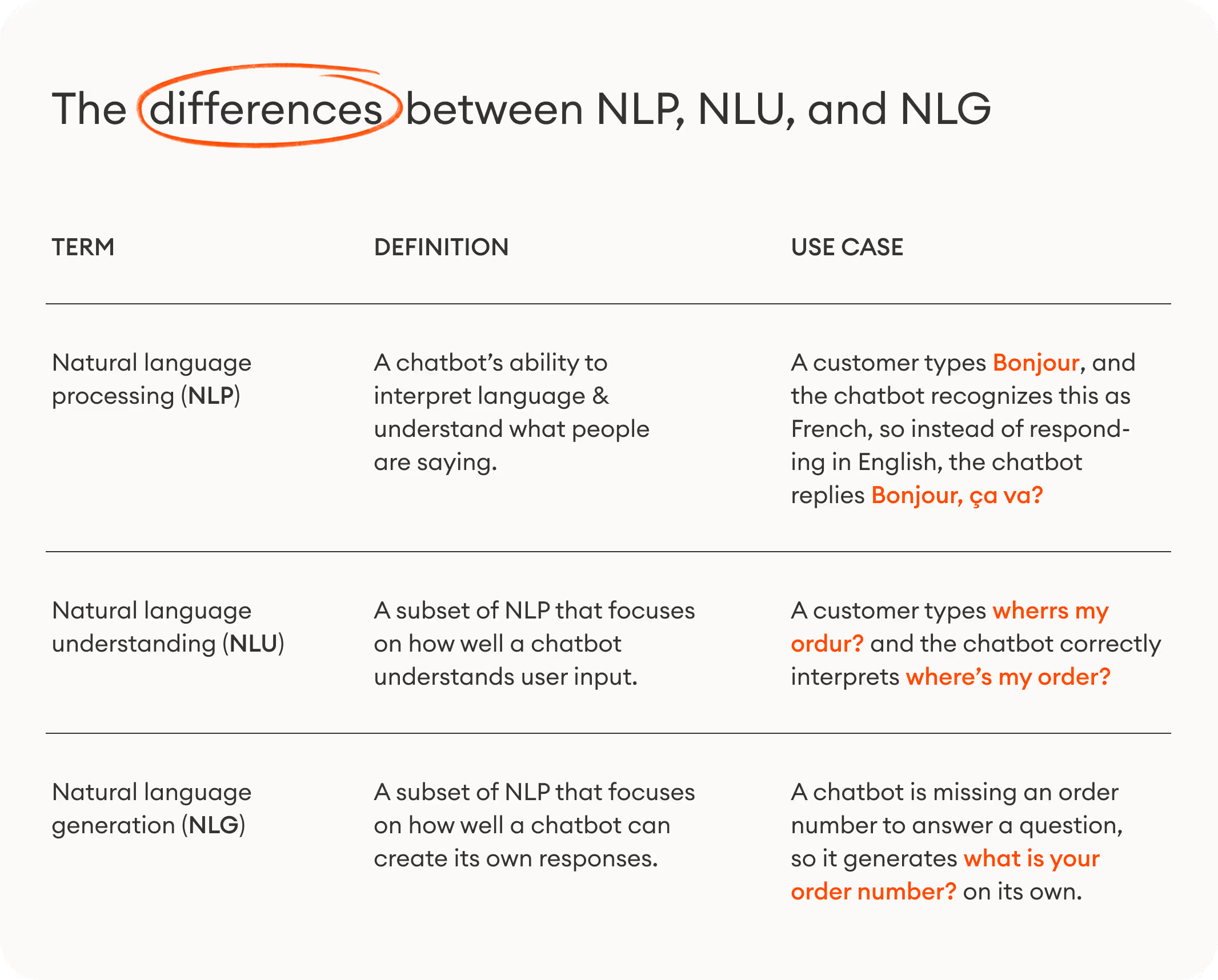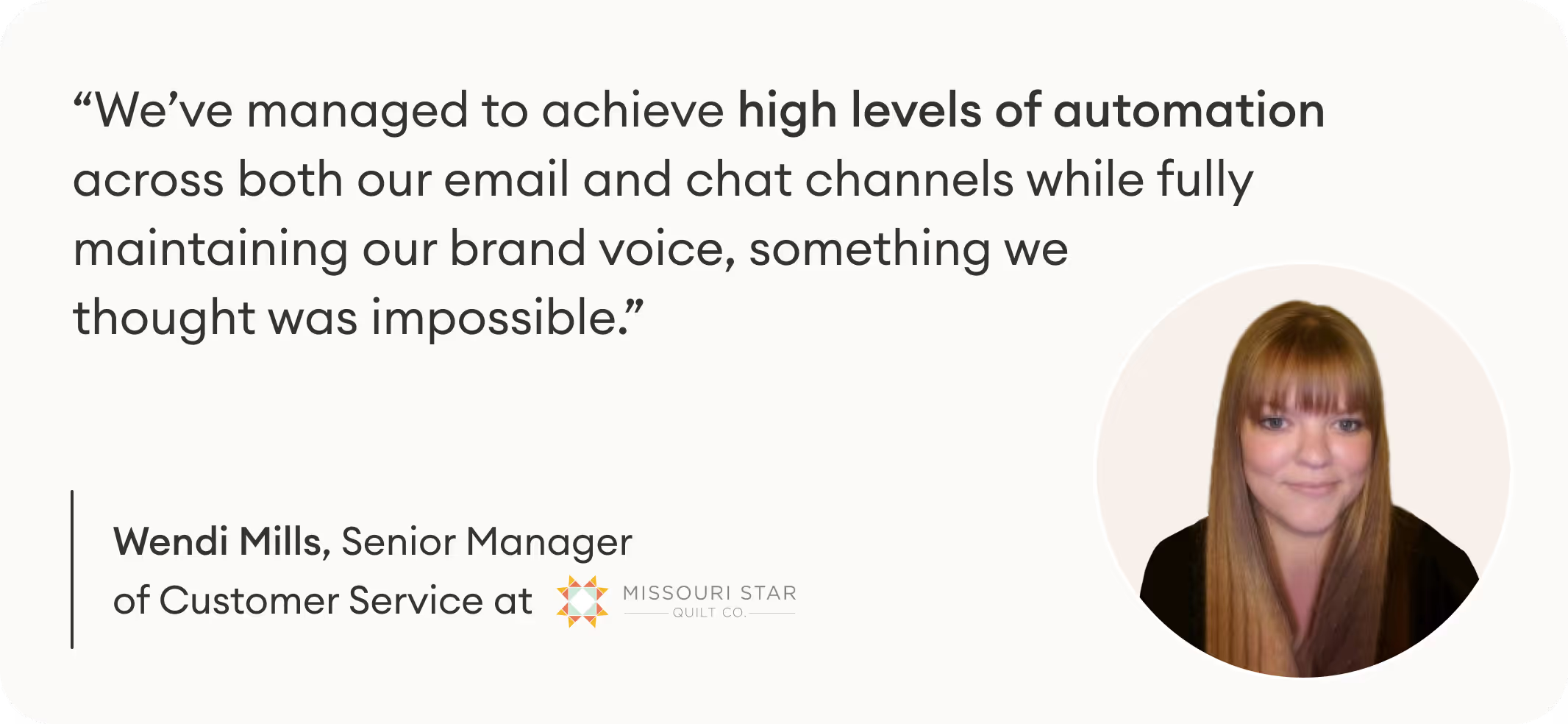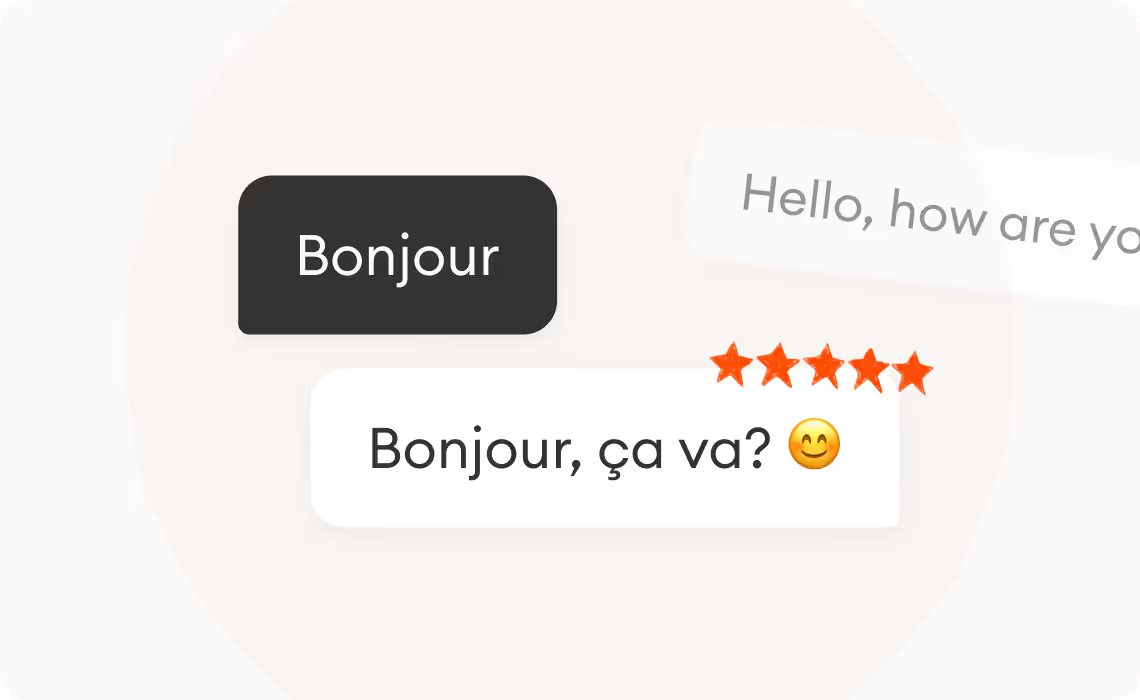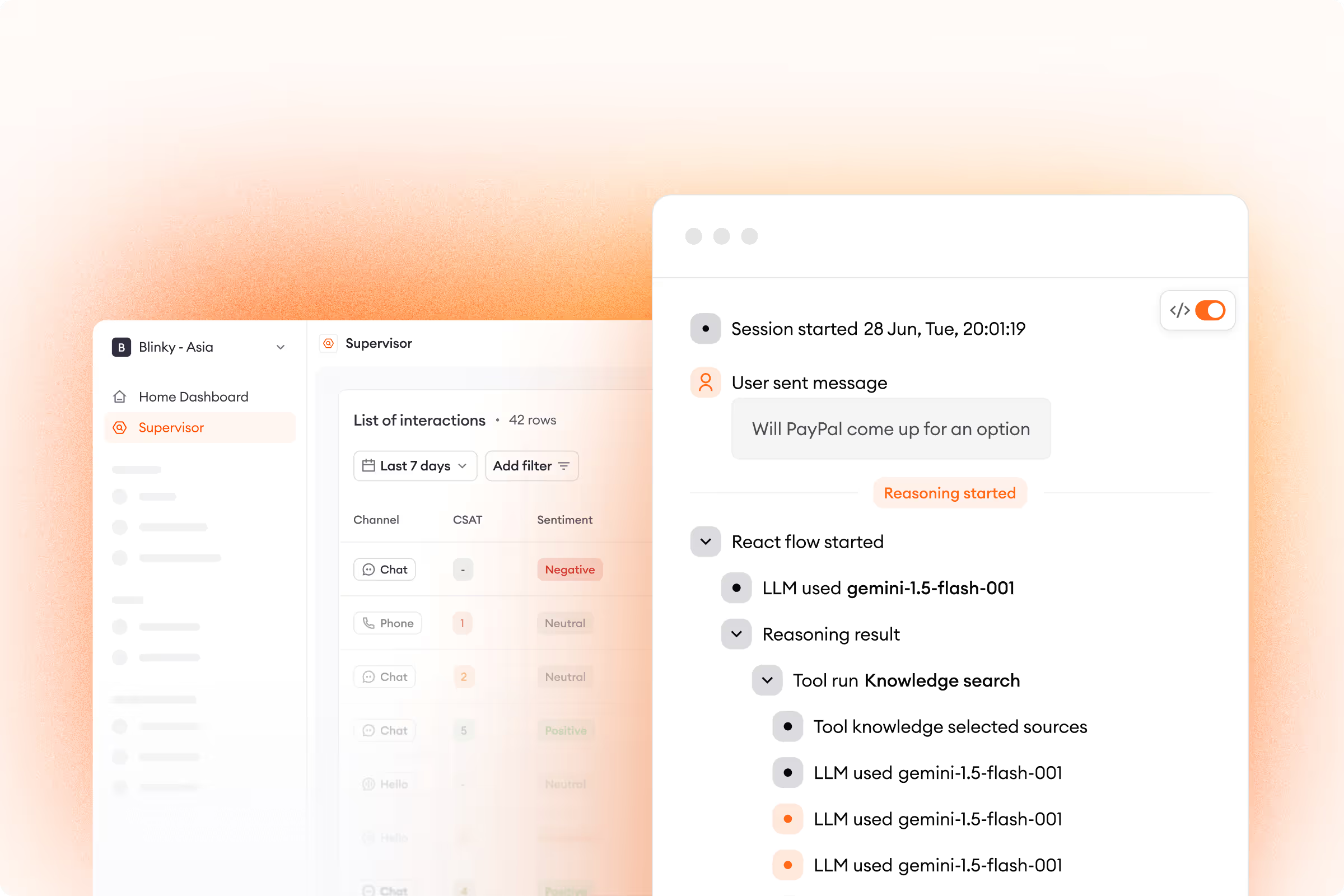Remember the infamous Tay chatbot?
In 2016, Microsoft launched Tay on Twitter (back when it was still Twitter), only to shut it down after 16 hours when the bot began posting offensive tweets.
Artificial intelligence (AI) had its day in the sun, yet the public dismissed it.
Fast forward to today, and the opposite holds true. Chatbot technology like ChatGPT has grabbed the world’s attention, with everyone wanting a piece of the generative AI pie.
In 2017, the global chatbot market was worth a modest $370M. In 2024, however, the market’s value is expected to top $2.1B, representing growth of over 450%.
What’s changed?
The answer is no secret. Today’s top solutions incorporate powerful natural language processing (NLP) technology that simply wasn’t available earlier. NLP chatbots can quickly, safely, and effectively perform tasks that more basic tools can’t.
What are NLP chatbots, and how do they work?
Let this article guide you through the biggest questions surrounding NLP chatbots.
What is an NLP chatbot?
An NLP chatbot is a computer program that uses AI to understand, respond to, and recreate human language. All the top conversational AI chatbots you’re hearing about — from ChatGPT to Zowie — are NLP chatbots.
Natural language processing, or a program’s ability to interpret written and spoken language, is what lets AI-powered chatbots comprehend and produce chats with human-like accuracy. NLP chatbots can detect how a user feels and what they’re trying to achieve. While chatbots using NLP are already being applied in several fields, they’re being deployed in customer service to determine a shopper’s tone, intent, and mood, whether they’re frustrated or just trying to complete a purchase.
Get the top stats surrounding AI’s role in customer support in our 33+ Vital Statistics on AI in Customer Service blog post.
How do NLP chatbots work?
Natural language processing chatbots, or NLP chatbots, use complex algorithms to process large amounts of data and then perform a specific task. The most effective NLP chatbots are trained using large language models (LLMs), powerful algorithms that recognize and generate content based on billions of pieces of information.
Combined, this technology allows chatbots to instantly process a request and leverage a knowledge base to generate everything from math equations to bedtime stories.
But how can a chatbot actually understand language?
AI chatbots backed by NLP don’t read every single word a person writes. Instead, they recognize common speech patterns and use statistical models to predict what kind of response makes the most sense — kind of like your phone using autocomplete to predict what to type next.
One way they achieve this is by using tokens, sequences of characters that a chatbot can process to interpret what a user is saying. Reading tokens instead of entire words makes it easier for chatbots to recognize what a person is writing, even if misspellings or foreign languages are present.
How do you build an NLP chatbot?
To build your own NLP chatbot, you don’t have to start from scratch (although you can program your own tool in Python or another programming language if you so desire).
You just need an automation platform equipped with NLP, NLU, and NLG capabilities. What’s the difference?
Natural language understanding (NLU) is a subset of NLP that’s concerned with how well a chatbot uses deep learning to comprehend the meaning behind the words users are inputting. NLU is how accurately a tool takes the words it’s given and converts them into messages a chatbot can recognize.
In contrast, natural language generation (NLG) is a different subset of NLP that focuses on the outputs a program provides. It determines how logical, appropriate, and human-like a bot’s automated replies are.
Leading NLP chatbot platforms — like Zowie — come with built-in NLP, NLU, and NLG functionalities out of the box. They can also handle chatbot development and maintenance for you with no coding required.

With this taken care of, you can build your chatbot with these 3 simple steps.
1. Define the purpose of your chatbot
Identify what problems you want your NLP bot to solve. Do you want a solution to help with your overall customer support, answer FAQs, or assist with product recommendations?
Once you know what you want your solution to achieve, think about what kind of information it’ll need to access. Sync your chatbot with your knowledge base, FAQ page, tutorials, and product catalog so it can train itself on your company’s data.
Remember — a chatbot can’t give the correct response if it was never given the right information in the first place.
2. Choose a chatbot development platform
There are several viable automation solutions out there, so it’s vital to choose one that’s closely aligned with your goals. In general, it’s good to look for a platform that can improve agent efficiency, grow with you over time, and attract customers with a convenient application programming interface (API).
Once you’ve selected your automation partner, start designing your tool’s dialogflows. Dialogflows determine how NLP chatbots react to specific user input and guide customers to the correct information. Intelligent chatbots also streamline the most complex workflows to ensure shoppers get clear, concise answers to their most common questions.
3. Train and test your chatbot
Set your solution loose on your website, mobile app, and social media channels and test out its performance on real customers. Take advantage of any preview features that let you see the chatbot in action from the end user’s point of view. You’ll be able to spot any errors and quickly edit them if needed, guaranteeing customers receive instant, accurate answers.

Key features of NLP chatbots
To successfully deliver top-quality customer experiences customers are expecting, an NLP chatbot is essential.
Why?
Here are the 7 features that put NLP chatbots in a class of their own and how each allows businesses to delight customers.
1. Complete personalization
According to Salesforce, 56% of customers expect personalized experiences. And an NLP chatbot is the most effective way to deliver shoppers fully customized interactions tailored to their unique needs.

These solutions can see what page a customer is on, give appropriate responses to specific questions, and offer product advice based on a shopper’s purchase history.
Not all customer requests are identical, and only NLP chatbots are capable of producing automated answers to suit users’ diverse needs. Treating each shopper like an individual is a proven way to increase customer satisfaction.
2. Omnichannel capabilities
More rudimentary chatbots are only active on a website’s chat widget, but customers today are increasingly seeking out help over a variety of other support channels. Shoppers are turning to email, mobile, and social media for help, and NLP chatbots are agile enough to provide omnichannel support on all of your customers’ preferred channels.
Intelligent chatbots can sync with any support channel to ensure customers get instant, accurate answers wherever they reach out for help. By storing chat histories, these tools can remember customers they’ve already chatted with, making it easier to continue a conversation whenever a shopper comes back to you on a different channel.
3. Lightning-fast onboarding
An effective chatbot is one you can get up and running ASAP. Older chatbots may need weeks or months to go live, but NLP chatbots can go live in minutes. By tapping into your knowledge base — and actually understanding it — NLP platforms can quickly learn answers to your company’s top questions.
Not only that, but they’re able to seamlessly integrate with your existing tech stack — including ecommerce platforms like Shopify or Magento — to unleash the full potential of their AI in no time.
4. Generative AI functionality
NLP chatbots don’t just regurgitate information they’ve been fed. They use generative AI to create unique answers to every single question. This means they can be trained on your company’s tone of voice, so no interaction sounds stale or unengaging.
Better still, NLP solutions can modify any text written by customer support agents in real time, letting your team deliver the perfect reply to each ticket. Shorten a response, make the tone more friendly, or instantly translate incoming and outgoing messages into English or any other language.
With generative AI, the AI does the hard work. Human intervention comes in only at the end to provide the final touch. .
To see what’s possible with generative AI, sign up for our interactive webinar, Generative AI in Customer Support: Benefits & Practical Applications.
5. The ability to self-improve
AI allows NLP chatbots to make quite the impression on day one, but they’ll only keep getting better over time thanks to their ability to self-learn. They can automatically track metrics like response times, resolution rates, and customer satisfaction scores and identify any areas for improvement.
Today’s top tools evaluate their own automations, detecting which questions customers are asking most frequently and suggesting their own automated responses. All you have to do is refine and accept any recommendations, upgrading your customer experience in a single click.
6. Customer sentiment analysis
Listening to your customers is another valuable way to boost NLP chatbot performance. Have your bot collect feedback after each interaction to find out what’s delighting and what’s frustrating customers. Analyzing your customer sentiment in this way will help your team make better data-driven decisions.
Leading NLP automation solutions come with built-in sentiment analysis tools that employ machine learning to ask customers to share their thoughts, analyze input, and recommend future actions. And since 83% of customers are more loyal to brands that resolve their complaints, a tool that can thoroughly analyze customer sentiment can significantly increase customer loyalty.

7. A user-friendly interface
Just because NLP chatbots are powerful doesn’t mean it takes a tech whiz to use one. Many platforms are built with ease-of-use in mind, requiring no coding or technical expertise whatsoever.
Set-up is incredibly easy with this intuitive software, but so is upkeep. NLP chatbots can recommend future actions based on which automations are performing well or poorly, meaning any tasks that must be manually completed by a human are greatly streamlined. Overall, ongoing maintenance can take as little as 1 hour per week.
What are the benefits of NLP chatbots?
NLP chatbots afford businesses the following benefits:
- Greater efficiency: With an NLP-powered virtual assistant, up to 70% of customer questions can be fully resolved without a human agent, a result that rule-based chatbots can’t achieve. NLP chatbots let service teams see fewer tickets and focus on more urgent cases.
- Higher customer satisfaction: NLP chatbots save customers time and effort by resolving issues quickly and without any friction. In addition, they create personalized, captivating conversations that feel completely natural. All of these factors combined mean more customers walk away happy.
- An enhanced customer experience: NLP chatbots can act as a 24/7 lifeline that customers can turn to for instant support. Capable of cutting resolution times by 77%, NLP solutions help shoppers swiftly continue their customer journeys without having to wait in a queue, resulting in lower cart abandonment and higher conversion rates.
It’s important to note that there are two main types of chatbots: NLP chatbots that leverage AI and the older rule-based chatbots.
Rule-based chatbots work in one of two ways. In the first, users can only select predefined categories and answers, leaving them unable to ask questions of their own. In the second, users can type questions, but the chatbot only provides answers if it was trained on the exact phrase used — variations or spelling mistakes will stump it.
In both instances, a lot of back-and-forth is required, and the chatbot can struggle to answer relatively straightforward user queries.
NLP chatbots are the preferred, more effective choice because they can provide the following benefits.
NLP chatbot example: How Missouri Star Quilt Co. uses an NLP chatbot to strengthen their brand voice
Missouri Star Quilt Co. serves as a convincing use case for the varied benefits businesses can leverage with an NLP chatbot.
Missouri Star witnessed a noted spike in customer demand, and agents were overwhelmed as they grappled with the rise in ticket traffic. Worried that a chatbot couldn’t recreate their unique brand voice, they were initially skeptical that a solution could satisfy their fiercely loyal customers.
Missouri Star added an NLP chatbot to simultaneously meet their needs while charming shoppers by preserving their brand voice. Agents saw a lighter workload, and the chatbot was able to generate organic responses that mimicked the company’s distinct tone.
The bulk of Missouri Star’s chats are now fully resolved by the chatbot, and the team still boasts a superior CSAT score over its competitors. Today, Missouri Star enjoys the following results:
- Resolution rate for chat: 76%
- Resolution rate for email: 30%
- CSAT for chat: 86%

Read more about Missouri Star’s support transformation using an NLP chatbot.
Which NLP is best for a chatbot?
Several NLP technologies can be used in customer service chatbots, so finding the right one for your business can feel overwhelming.
Don’t worry — we’ve created a comprehensive guide to help businesses find the NLP chatbot that suits them best.
Our free ebook, Finding the Right Customer Service Automation Software, explains what to be on the lookout for as you search for a solution optimized to meet your needs.

.avif)







